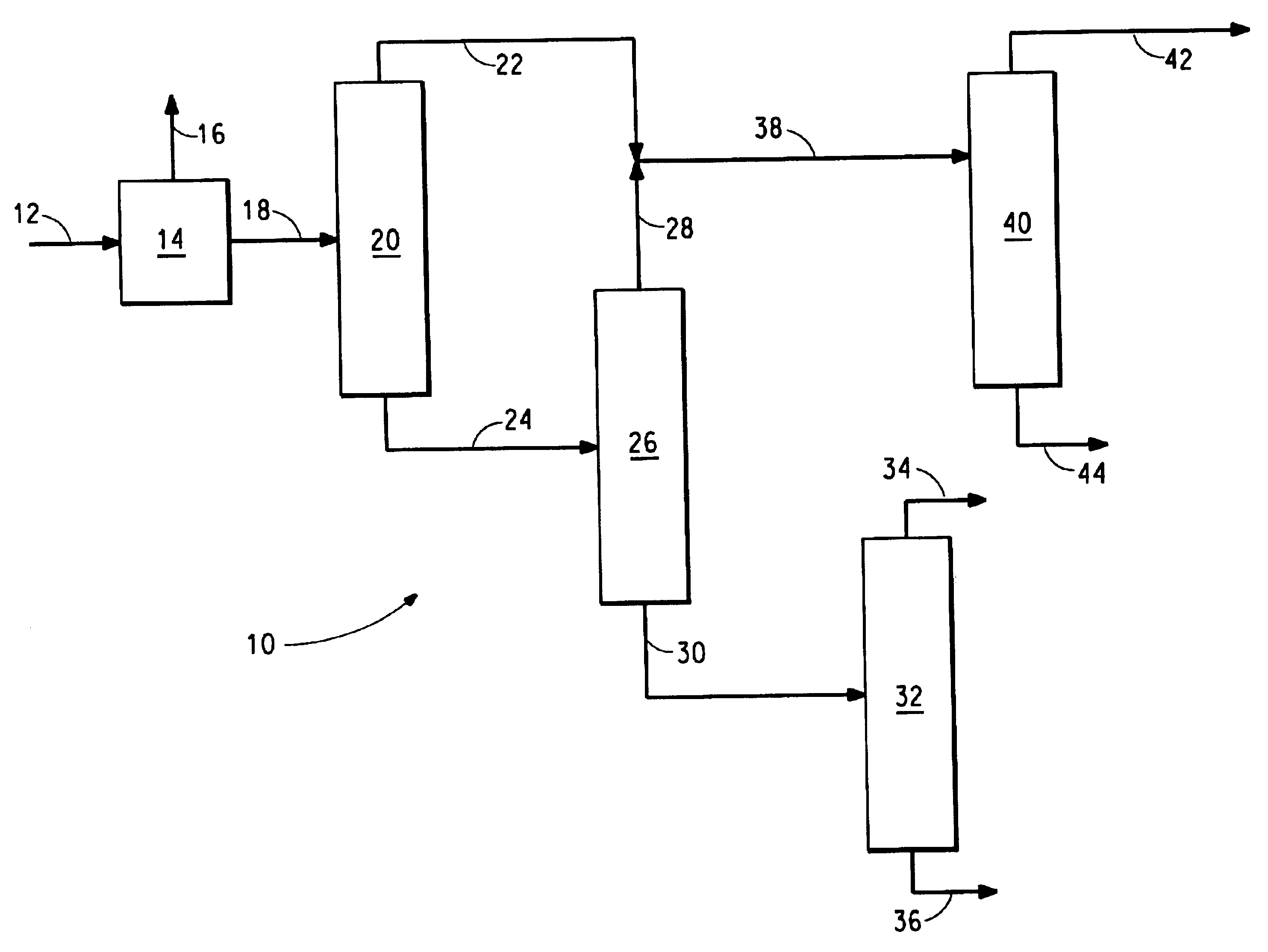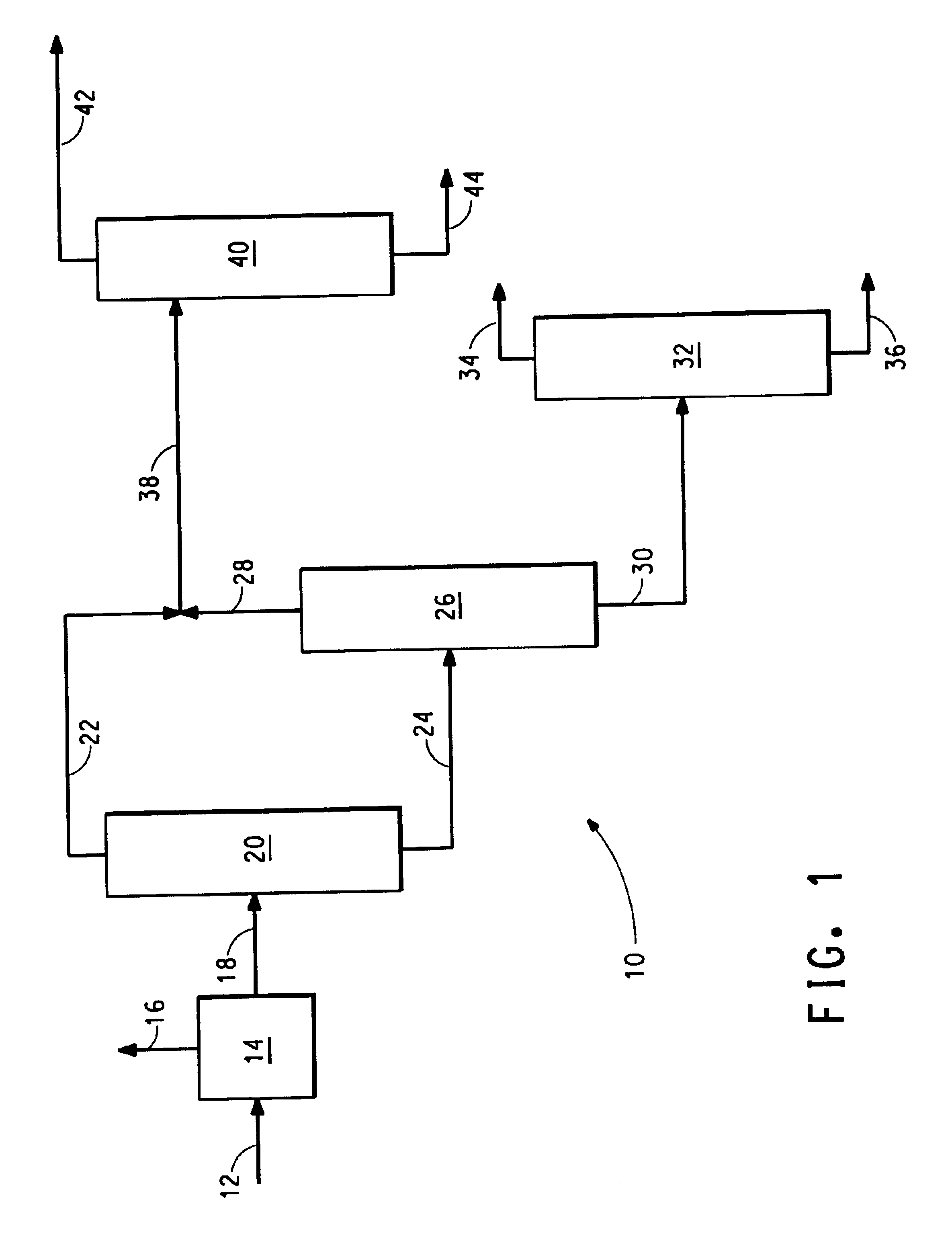Distillative method for separating hexamethylenediamine from a mixture comprising hexamethylenediamine, 6-aminocapronitrile and tetrahydroazepine
a technology of hexamethylenediamine and distillation method, which is applied in the direction of vacuum distillation separation, amino compound preparation, separation process, etc., can solve the problem of hmd being substantially free from distillation method, and the method can be taught in a manner
- Summary
- Abstract
- Description
- Claims
- Application Information
AI Technical Summary
Benefits of technology
Problems solved by technology
Method used
Image
Examples
example
[0010]This example illustrates the invention as claimed herein and is not intended to be limiting.
Feed
[0011]The feed contained 1000 ppm THA, 39.3% HMD, 35.5% ACN, 24.4% ADN, but contained no CPI.
Equipment
[0012]Distillation column 20 was 2 inches in diameter, vacuum jacketed, and consisted of 15 feet of Sulzer® BX packing, with feed to a reboiler. Distillation column 40 was the same as column 20, except that an additional 10 feet of packing was added to the column to give 10 feet of stripping and 15 feet of rectification.
Analytical
[0013]Samples taken from the distillation columns were analyzed by gas chromatography. Compositions were determined by area % (no internal standards were used).
Distillation Column 20 Operation
[0014]The purpose of this column is to take most of the HMD, low boilers, and ACN overhead, and obtain a bottoms stream that contains the ADN and high boilers, as well as some ACN. The column feed is into the reboiler to maintain a reduced reboiler temperature and mini...
PUM
| Property | Measurement | Unit |
|---|---|---|
| pressure | aaaaa | aaaaa |
| pressure | aaaaa | aaaaa |
| temperature | aaaaa | aaaaa |
Abstract
Description
Claims
Application Information
 Login to View More
Login to View More - R&D
- Intellectual Property
- Life Sciences
- Materials
- Tech Scout
- Unparalleled Data Quality
- Higher Quality Content
- 60% Fewer Hallucinations
Browse by: Latest US Patents, China's latest patents, Technical Efficacy Thesaurus, Application Domain, Technology Topic, Popular Technical Reports.
© 2025 PatSnap. All rights reserved.Legal|Privacy policy|Modern Slavery Act Transparency Statement|Sitemap|About US| Contact US: help@patsnap.com


